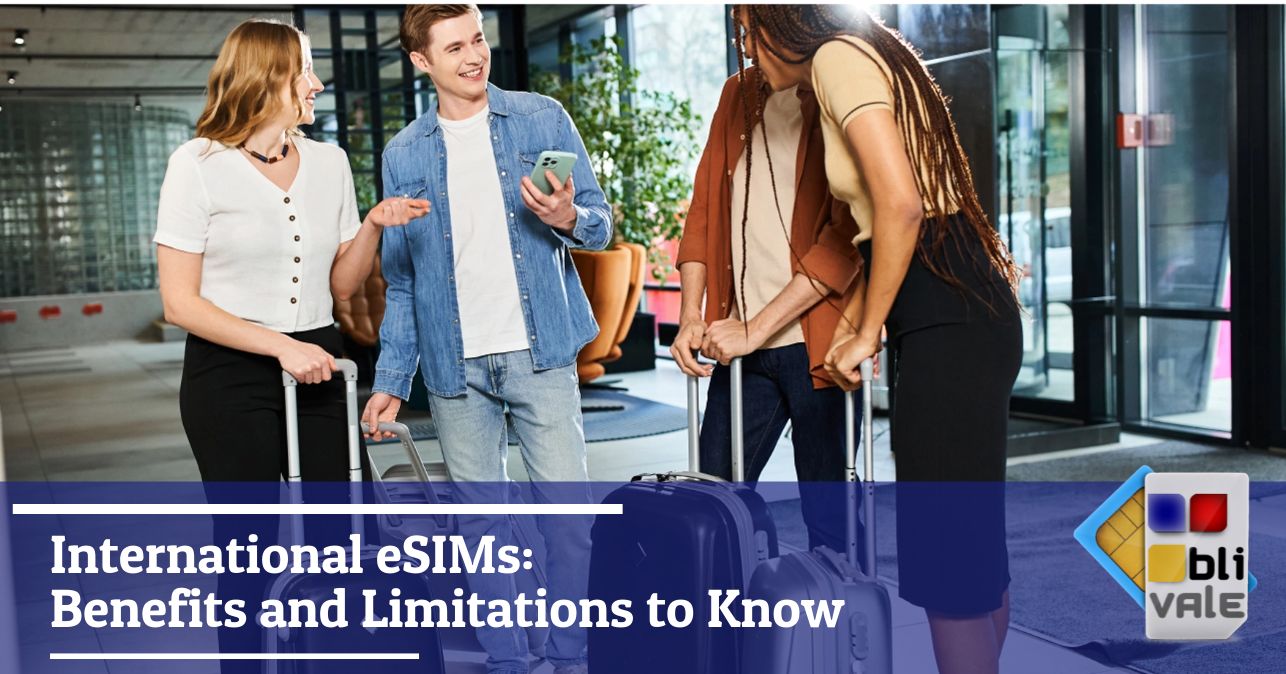In recent years, eSIM technology has revolutionized the way we travel and communicate abroad. But like any innovation, international eSIMs also have some limitations that you should be aware of before committing to this solution entirely. In this article, we will explore in detail all the potential restrictions of eSIMs for travel , offering a complete overview for those who are considering this option for their international travel.
Device Compatibility: The First Hurdle
One of the main limitations of eSIMs is device compatibility. Not all smartphones, tablets, or smartwatches support this technology, especially older models. Before purchasing an international eSIM plan, it is essential to verify that your device is compatible.
Major manufacturers such as Apple, Samsung, Google, and Huawei have started integrating eSIM support into their flagship models since 2018-2019, but it is not yet universally available. Many mid-range or budget devices may not support this technology, forcing travelers to use traditional SIM cards.
Compatibility check with BLIVALE
To avoid unpleasant surprises, BLIVALE provides a practical tool to check the compatibility of your device with eSIMs . On their website you can consult a complete and detailed list of all supported models, from the latest iPhones to Samsung Galaxy, from Google Pixels to devices from other brands.
This list is updated periodically to include new models released on the market, ensuring users always have up-to-date information. Before purchasing an international eSIM plan, it is advisable to check the compatibility of your device through this tool, saving time and potential inconveniences during the trip.
Limited coverage in some countries
Despite the growing global adoption of eSIMs, international coverage still has some geographical gaps. While coverage is generally excellent in major tourist destinations and large cities, there may be limitations in some remote areas or developing countries.
In some countries, eSIM roaming agreements may be less developed than those for SIM cards, resulting in lower connection quality or higher rates. Before traveling to less common destinations, it is always advisable to check the specific coverage of your eSIM plan in the areas you intend to visit.
The problem of transferring between devices
One of the most significant technical limitations of eSIMs is their portability. Unlike SIM cards, which can be easily moved from one phone to another, eSIMs are generally tied to the device on which they are activated.
This means that if your smartphone gets damaged while traveling, you can't simply remove the SIM and insert it into another device. To use your data plan on a new device, you will need to contact your provider and request a new activation, a process that can take time and may not always be immediate.
Tethering and Hotspot: Limitations Overcome with BLIVALE
Many carriers have restrictions on tethering and hotspots for international eSIMs, limiting your ability to share your internet connection with other devices. This can be especially frustrating when traveling in a group or needing to connect laptops, tablets, or other devices at the same time.
However, BLIVALE has overcome this limitation by offering eSIM plans that freely allow the use of hotspot and tethering without any additional costs or restrictions. This feature is a major advantage for travelers who need to connect multiple devices simultaneously while on the move, making the user experience much more flexible and convenient.
If you are thinking of taking a trip alone or with friends or for work, do not forget the importance of staying connected wherever you are. For unlimited Internet connection, contact BLIVALE where you can get unlimited Internet according to the destinations:
For unlimited plans like data BLIVALE guarantees free roaming anywhere in the world, no additional or hidden costs. Don't let the lack of connection stop you; get ready to explore the world with freedom and spontaneity.
Connectivity dependency for activation
An often overlooked aspect is the need for a stable internet connection to activate an eSIM. This can create an apparent vicious circle: to activate your international eSIM you need connectivity, but you are looking for an eSIM precisely because you do not have a connection abroad.
Many BLIVALE customers have easily solved this problem by purchasing and activating their eSIM directly during the trip or upon arrival at their destination. BLIVALE recommends simply using the free WiFi available in airports, hotels, cafes or other public facilities only for the time necessary for activation, which takes just a few seconds. This practical solution eliminates the need to plan activation before departure, offering greater flexibility to travelers who can decide to purchase an eSIM even at the last minute or when they actually feel the need during their stay abroad.
The most common solution remains to activate the eSIM before departure, when you still have a reliable connection, but it is reassuring to know that the alternatives offered by BLIVALE are simple and effective even for those who have not had the opportunity to plan in advance.
Possible speed and performance limitations: the BLIVALE solution
Some travel eSIMs may have speed limits or fair usage policies that reduce performance after a certain amount of high-speed data has been consumed. This practice, known as "throttling," can cause significant slowdowns when browsing the Internet, streaming video, or doing other activities that require a fast connection.
It is important to note that BLIVALE does not have its own limitations for Unlimited eSIMs . Any limitations, when they occur, are exclusively imposed by the local operator of the country you are in. But even in this case, BLIVALE has developed an effective solution: if limitations by the local operator were to occur, you will simply continue to browse at a lower speed for the rest of the day, without interruptions in service. The significant advantage is that for Unlimited eSIMs everything is automatically restored the following day, once again guaranteeing the maximum available speed. This intelligent system ensures a constant connection throughout the trip, eliminating one of the main drawbacks of traditional international eSIMs.
Before purchasing an international eSIM plan elsewhere, it is therefore advisable to consider this distinctive feature of BLIVALE which represents a significant advantage for those who need reliable and continuous connectivity during their travels.
Conclusions: Weighing the advantages and limitations
Despite the limitations of international eSIMs discussed in this article, the advantages of this technology remain considerable. The convenience of not having to physically purchase a local SIM, the ability to activate the service before departure, and simplified management via an app make eSIMs an increasingly popular solution among frequent travelers.
BLIVALE stands out in the international eSIM landscape thanks to the possibility of freely using the hotspot and tethering and the practical tool for checking device compatibility. Considering these advantages together with the potential limitations, each traveler will be able to evaluate whether the adoption of an international eSIM represents the ideal solution for their connectivity needs abroad.
Before you embark on your next trip, taking the time to properly educate yourself on your options can make the difference between a seamless, hassle-free connectivity experience and potential technological frustrations just when you need to stay connected most.









